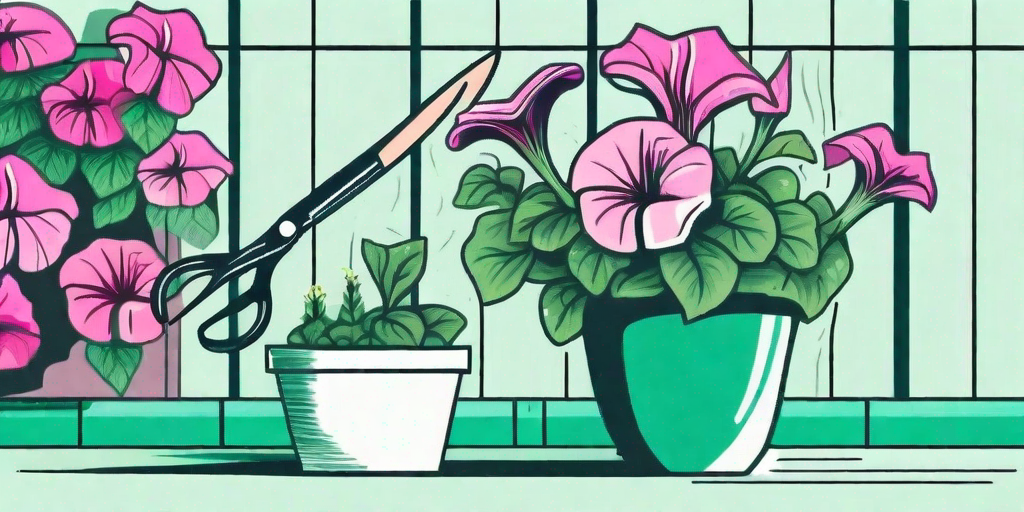
Petunias, the divas of the garden world, are known for their vibrant colors and lush blooms. But like any diva, they require a bit of pampering to keep them looking their best. That's where deadheading comes into play. Deadheading, or the process of removing spent flowers, can help your petunias bloom all season long. But how do you do it? And why is it so important? Buckle up, green thumbs, because we're about to dive into the fabulous world of petunia care.
Why Deadhead Petunias?
Deadheading petunias isn't just a fun way to spend a sunny afternoon (though it can be quite therapeutic). It's a critical part of petunia care. When you remove spent blooms, you're essentially telling the plant to stop producing seeds and start producing more flowers. It's like giving your petunias a pep talk: "You're not done yet, darling. Keep those blooms coming!"
But it's not just about aesthetics. Deadheading also helps prevent diseases and pests. When old flowers are left to decay on the plant, they can attract all sorts of unwanted guests. So, by deadheading, you're not only keeping your petunias looking fabulous, but you're also keeping them healthy. It's a win-win!
How to Deadhead Petunias
Now that you understand the why, let's talk about the how. Deadheading petunias is a simple process, but it does require a bit of finesse. After all, you're dealing with divas here.
First, you'll need a pair of sharp pruning shears. Dull shears can damage the plant, so make sure your tools are up to the task. Next, locate the spent bloom. You'll want to cut it off at the base of the stem, just above the next set of leaves. Be careful not to damage the surrounding foliage. And voila! You've just deadheaded your first petunia.
Best Time to Deadhead
Timing is everything in the world of petunia care. The best time to deadhead is in the early morning or late evening when the plant is less stressed. Avoid deadheading in the heat of the day, as this can cause unnecessary stress to your petunias.
It's also important to deadhead regularly. Don't wait until your petunias are looking sad and droopy. Make it a habit to check your plants every few days and remove any spent blooms. Your petunias will thank you for it.
Advanced Petunia Care
Deadheading is just one part of petunia care. If you really want to pamper your petunias, there are a few other things you can do.
First, make sure your petunias are getting plenty of sun. These divas love the spotlight and need at least six hours of sunlight each day. They also prefer well-drained soil, so avoid planting them in areas where water tends to pool.
Fertilizing Your Petunias
Like any diva, petunias love to be pampered. And nothing says pampering like a good meal. Fertilize your petunias every two weeks with a balanced, water-soluble fertilizer. This will provide them with the nutrients they need to produce those gorgeous blooms.
But be careful not to overdo it. Too much fertilizer can lead to leafy growth at the expense of flowers. Remember, it's all about balance.
Watering Your Petunias
Watering is another important aspect of petunia care. Petunias prefer their soil to be moist but not soggy. Overwatering can lead to root rot, which is a surefire way to kill your petunias.
As a general rule, water your petunias when the top inch of soil feels dry to the touch. And remember, it's better to water deeply and less frequently than to water lightly and often.
FAQs
Can I deadhead petunias with my fingers?
Yes, you can deadhead petunias with your fingers. However, using pruning shears will give you a cleaner cut and reduce the risk of damaging the plant.
What happens if I don't deadhead my petunias?
If you don't deadhead your petunias, they will spend more energy producing seeds and less energy producing flowers. This can result in fewer blooms and a less vibrant display.
Can I deadhead other flowers the same way?
Yes, most annual flowers benefit from deadheading. However, the process may vary slightly depending on the type of flower. Always do your research before getting snip-happy.
Conclusion
Deadheading petunias may seem like a chore, but it's a small price to pay for a garden full of vibrant, blooming divas. With a little bit of care and attention, your petunias can steal the show all season long. So grab your pruning shears and get to work. Your garden will thank you.
And remember, gardening isn't just about the end result. It's about the journey. So take your time, enjoy the process, and don't forget to stop and smell the petunias.















